A 16 Week Action Plan to Crisis Proof Your SaaS Business Right Now
Last updated: April 1st, 2020
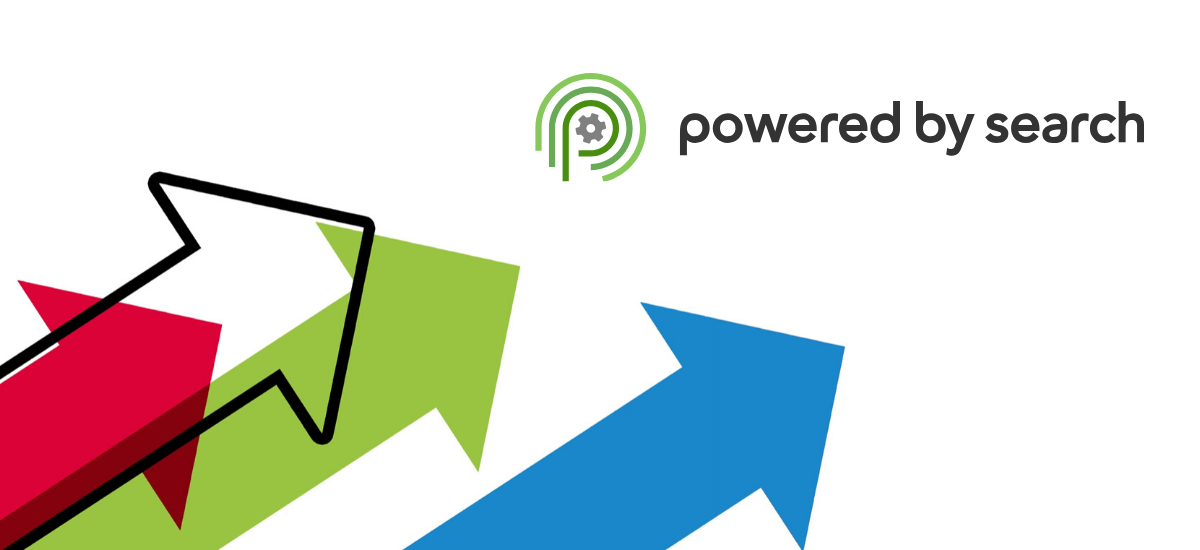
Recently we hosted a webinar for B2B SaaS companies about how to crisis-proof your business during this COVID-19 outbreak and market downturn. We were joined by 30 SaaS leaders in our network and to kick things off we asked them what the hardest part about this crisis has been for them.
In summary, here’s what they had to say:
- Their customers and prospects are being rattled by a sudden change and they’re trying to figure out next steps.
- Some customers are panicking and asking to put their accounts on hold, while others are requesting downgrades or churning.
- They’re seeing abrupt decreases in incoming traffic, and changes in the order of size and payment terms.
- They know they need to be responding appropriately in this time with their marketing, but they aren’t sure what specifically they should do.
We showed them this graph below, which demonstrates the three ways that SaaS businesses can respond right now, and the likely ways those reactions will result differently over the course of the next 3 years.

This graph is inspired by conversations between our friend Todd Herman and a group of 29 top CEO’s around the world. Out of those conversations emerged these 3 camps of people (those panicking, those prepping, and those positioning). The model was used with permission from our friend, Simon Bowen.
The survival line is roughly the worst-case scenario of when this crisis will resolve and things will begin to turn around. We use it here as an anchor to forecast how companies will fare based on their thinking and actions in the coming weeks and months.
For the SaaS businesses who are being driven by fear right now, a likely scenario is that panic will lead them to lose significant market share or go out of business altogether. For the ones taking some actions but lacking strategic focus, their businesses may survive but are unlikely to come out thriving. And lastly, the companies who choose to move forward with a strategic focus are the ones most likely to come out of this scenario positioned in an even better spot than they are now.
If there’s one thing we can stress right now it’s this: it does not matter what camp you’re in right now (fearful, unfocused, or strategic) — it’s not too late. This is just the beginning and you can turn things around if you haven’t already.
In fact, right now there are three distinct opportunities for any company who wants to seize them:
- Your competition is scared: You’re not alone. Everyone else is feeling the same thing you are right now.
- You know exactly what’s on your prospects’ minds: This is your chance to use messaging to speak directly to their specific needs during this time.
- Your market is looking for leadership: While everyone else is sending out bland COVID emails, you can show up with more empathy and strive to be actually useful to the people you seek to serve.
In this article, we’re going to summarize a range of topics that we covered in our webinar. This includes our observations in the market from a marketing, sales, and operational perspective — an extensive list of actionable steps you can take in the next 16 weeks, and the things we’ve immediately started implementing and discussing with our clients.
Note: This is not an article that needs to be read beginning to end. Use the following table of contents to jump into the section that sparks your interest or is most relevant to you.
Table of Contents
- The State of B2B SaaS Right Now
- A 16 Week Action Plan for Crisis Proofing Your SaaS Business (includes workbook with checklist)
- What We’re Working On and Brainstorming with Our Clients Right Now
We help B2B SaaS businesses grow faster and smarter through SEO and paid media. Schedule a Free SaaS Scale Session to learn more.
The State of B2B SaaS Right Now
So far, we’re seeing a lot of SaaS businesses scrambling to figure out what to do right now. They’re trying to decide what messages they should be sending, what channels they should be focusing on, and where they should be spending their marketing dollars.
At the same time, they’re trying to figure out how to navigate sales conversations and how to convert their best leads before they’re lost. And many of them are trying to achieve all of this while working 100% remotely for the first time.
These challenges, combined with a potentially years-long effort to make it through this downturn, call for a holistic approach to running your business for anyone who wants to get on the positioning track (the ones who want to be on the green line in the graph above).
In our webinar, we discussed our thoughts on how SaaS businesses should think about responding to this crisis from a marketing, sales, and operational perspective.
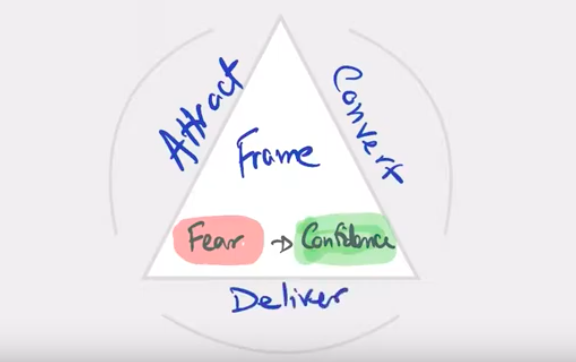
SaaS businesses need to move from a fear-based to a confidence-based response in how they attract (marketing), convert (sales), and deliver value to (operations) their customers.
When we asked webinar attendees which of these three areas they need the most help with right now, 80% of them answered marketing.
SaaS Marketing During the Crisis: How You Continue to Attract Prospects
If you’re trying to speak to people the same way you were in January, your messaging will be irrelevant and ignored. The brands who are able to shift their messaging to be relevant and compelling are the ones who will win the attention of their audiences.
Think about the opportunity at hand if you get this right: every one of your prospects and customers is at home, working remotely, spending even more time than usual in front of their computers and on the internet. Attention is at an all time high, and at the same time the cost of their attention is dropping rapidly as people vacate the market.
For those who understand how to attract and build an audience right now there is no better time. One of the first and most important things you need to do is pivot your messaging.
In particular, you need to:
- Align your messaging across all the different channels where you communicate with customers from your ads, to your offers, to the homepage of your website.
- Contextualize your messaging so that it speaks to the way people are feeling now.
Here’s an example of contextualized messaging:
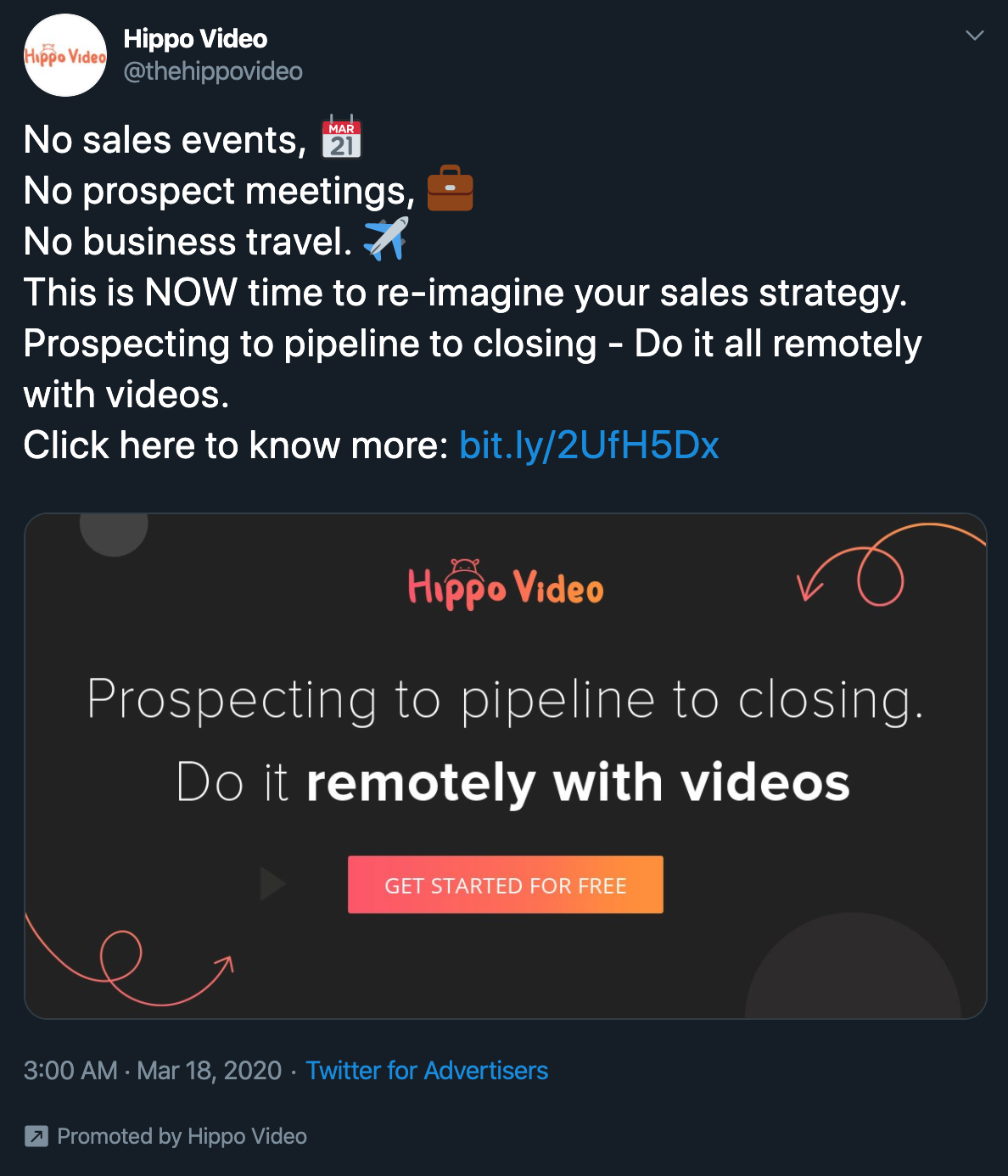
Here Hippo Video speaks directly to the experience that people are having, and frames it in a way that says, “With all this going on, this is the perfect time to test out their product.”
One webinar guest, Patrick, made a great point. He said, “Contextualizing is adding empathy, connection, being human, and being present in the moment.” These ideas of empathy and being human are exactly the type of qualities that will help your messaging resonate more with your audience.
Take this message from Flightfox:
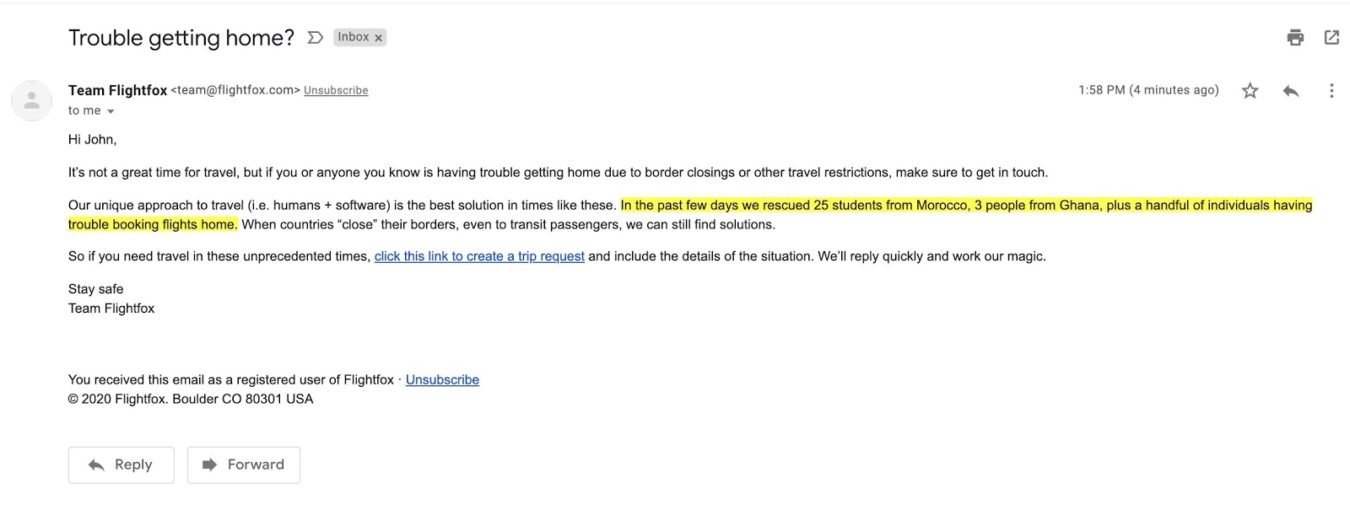
Offering personalized services to go out of their way to help people like this is a perfect example of bringing humanity to your messaging right now.
SaaS Sales During the Crisis: How You Convert Them Into New Customers
The second most common response to what companies need the most help with right now was conversions. The challenge we see is that for many companies, instead of their services being in demand they’re being viewed as discretionary or optional.
If you’re finding in sales conversations that prospects are viewing your service this way, this has to do with the way you’re positioning and talking about your offer. You need to figure out what you could be doing to showcase pure concrete value.
This means trading closing conversations and check-ins for conversations about how you’re going to help your customers navigate through this particular crisis. We’ll be talking about specific ways to do this below.
SaaS Operations During the Crisis: How You Continue to Deliver Value While Working Remotely
As much as we operate digitally even when we’re in the office together, a lot of companies right now are working entirely remotely for the first time. They’re used to having their product team working next to their engineering team working next to their sales and leadership teams. And now they need to shift to an entirely virtual experience.
We think the companies who are able to break down silos and unify this experience of working digitally will be the ones who can thrive in all three areas. Zoom is great, but it’s not the same as in-person connection.
You need to think about what rhythms, formats, and habits you can put in place to unify your company’s information sharing, socializing, and overall marketing operations. We’ll be giving specific recommendations on how to do this.
What follows is an extensive list of specific actions you can take to move forward and respond strategically to this crisis in your marketing, sales, and operations.
A 16 Week Action Plan for Crisis Proofing Your SaaS Business
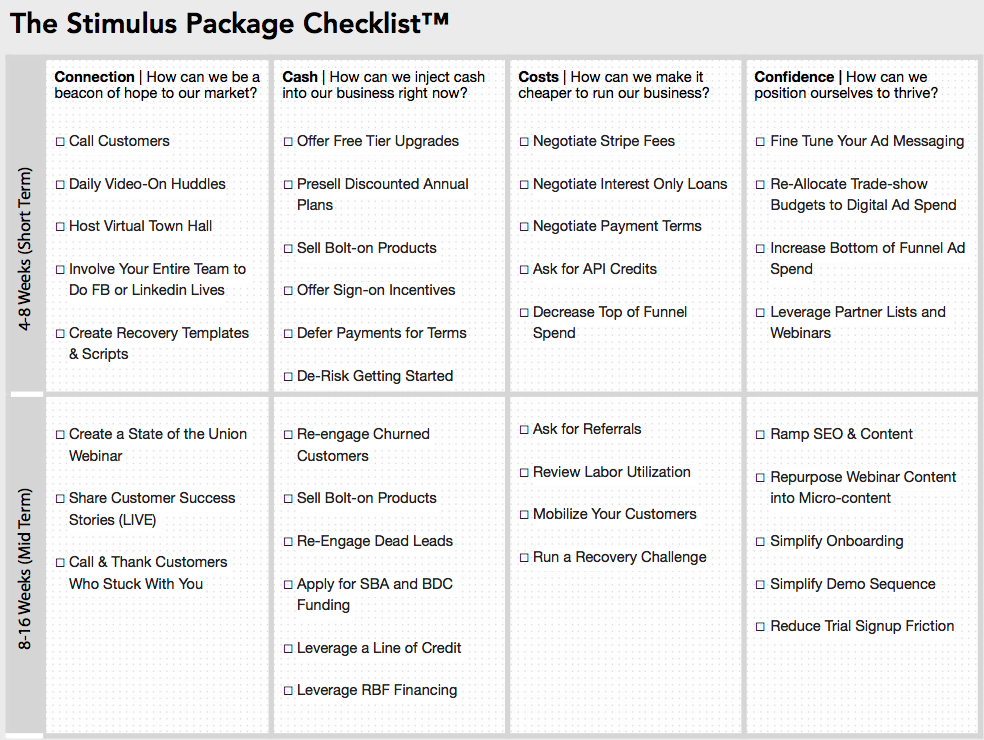
In the workbook we provided to webinar attendees there’s a Stimulus Package Checklist. It’s broken down into what specific actions you can take over the short term (next 4-8 weeks) and mid term (next 8-16 weeks).
The checklist is broken down into four categories that we’re calling the four C’s:
- Connection: How can we be a beacon of hope to our market?
- Cash: How can we inject cash into our business right now?
- Costs: How can we make it cheaper to run our business?
- Confidence: How can we position ourselves to thrive?
We recommend distributing this amongst your team and delegating some of these responsibilities. Here are our specific recommendations for each.
Connection: How Can We Be a Beacon of Hope to Our Market?
From our standpoint, this is the most important category in the short term.
Short Term (Next 4-8 Weeks)
- Call customers: If you haven’t already, call your customers and check in on them. Right now they’re thinking about saving themselves, and it’s your job to be thinking about saving them. No pitches, just genuine concern and support.
- Daily video-on huddles: If you have employees, everywhere they look they’re going to be seeing layoffs. So as a leader, this is a crucial time for regular connection to let them know where your business is at and what your plans are.
- Host virtual town hall: Just like the webinar, you can host your own version of this for your customers and market. If you want to duplicate what we did, we give you full permission to go forward and do that. It’s immensely helpful to help your community band together.
- Involve your entire team to do Facebook or LinkedIn live streams: Since everyone is working remotely at home and consuming a ton of information on social, this is a great time to host a live stream on the channel where your customers hang out. Get everyone involved so this doesn’t weigh too heavily on your leadership team. Offer things like office hours or Q&A’s to connect in a live setting. Then turn these lives into Facebook ads that are getting video views for only a few cents.
- Create recovery templates and scripts: Everyone needs help with messaging right now, but people are worried about how to get this done fast as opposed to how to get it done right. The best way to do this is to give people scripts of what to say, and to have different scripts for different scenarios (eg. folks who want to downgrade, prospects on the fence, etc.).
Mid Term (8-16 Weeks)
- Create a state of the union webinar: This would be an effort, similar to the state of B2B SaaS section above, to compile data into an overview of what’s happening in your industry right now, and offering that to your partners, customers, and wider community.
- Share customer success stories (LIVE): If you have stories of customers who are using your product to navigate this crisis, better serve their customers, or continue growing during this time of contraction, then showcase that.
- Call and thank customers who stuck with you: Let them know how much you appreciate it and how meaningful it is to you that you’ve stuck together.
Cash: How Can We Inject Cash Into Our Business Right Now?
Regarding cash, SaaS from our perspective is one of the most resilient industries there is in a crisis like this because most companies have a gross margin of 80% or higher. They have the unique advantage of being able to serve more people at a lower marginal cost compared to the labor heavy industries that are suffering right now (travel, hospitality, restaurants, etc.).
Short Term (Next 4-8 Weeks)
- Offer free tier upgrades: This means going to your existing customers and offering to provide them with a tier upgrade for a period of time that makes sense. Rather than trying to just not get them to quit, you can guide them onto a path of engaging even more with your product.
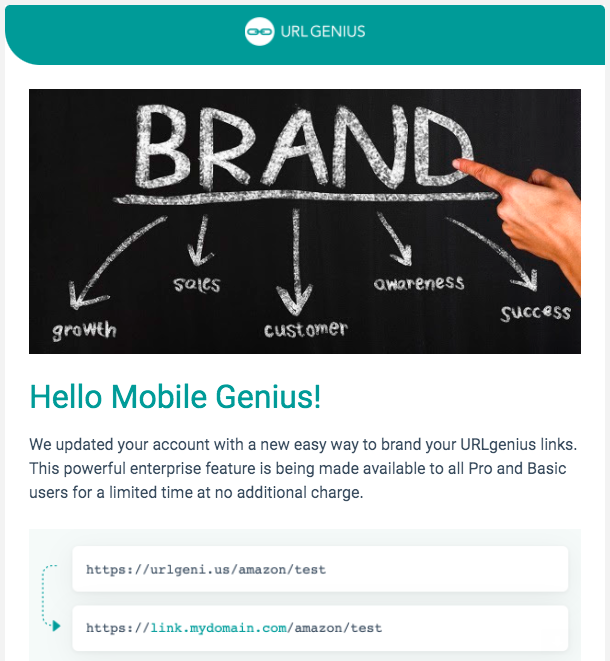
- Presell discounted annual plans: Could you sell more discounted annual plans? Could you move from monthly to quarterly? From annual to a multi-year plan? These are the types of options you should be considering to increase cash flow.
- Sell bolt-on products: If you have an adjacent or useful product or service that you can bring into the mix and offer as an add on for a discounted rate, this is another way of expanding your revenue right now.
- Other options to consider: Offering sign-on incentives, deferring payment terms, and de-risking getting started are all worth considering as additional ways to inject cash into your business.
Mid Term (8-16 Weeks)
- Re-engage churned customers and dead leads: Most SaaS companies do not reach back out to customers who churned six, nine, or twelve months ago. This is an underutilized strategy to re-engage people you’ve already been connected with instead of always hunting for new leads. You can do the same with dead leads.
- Apply for SBA and BDC funding: Many governments including both the US and Canada are dropping rates and making access to funding more available, so it’s becoming easier to apply for and leverage additional funding.
- Leverage a line of credit: If you have a healthy MRR right now, you can establish a line of credit with a given bank, and then pull that money out and move it to a different bank. That way when credit starts getting tight and banks begin reducing credit, if you’ve already pulled those dollars out and put them somewhere else you’ll be able to continue to use those funds without losing them.
- Leverage revenue-based (RBF) financing: Companies like Lighter Capital will give financing based on your MRR. In boom times these aren’t always the best deal, but in times like this it’s an option to consider.
Costs: How Can We Make It Cheaper to Run Our Business Right Now?
A lot of businesses are thinking about what they can cut in terms of fixed expenses, and many of them are jumping straight to focusing on labor. But your hard-earned talent should be the last thing you’re thinking about for reducing costs. Yes, it’s a big percentage of your P&L, but there are other ways of looking at cutting costs first.
We want you to look at the entire ecosystem of how your SaaS business runs to spot opportunities for this.
Short Term (Next 4-8 Weeks)
- Negotiate fees: Reach out to Stripe to negotiate your fees. Reach out to negotiate down your interest-only loans. Negotiate any payment terms to manage your cash flow.
- Ask for API credits: If you’re using API’s from other companies, ask for API credits — because remember, the marginal cost of an API credit is low, and companies are likely to be more lenient than ever about things like this.
- Decrease top of funnel spend: While you might normally allocate budget for top of funnel ads, right now it makes less sense to spend money there because top of the funnel audiences are less likely than usual to respond. So these funds can be better utilized on bottom of funnel ads at this time. Now is the time to double-down on your SEO program as well.
Mid Term (8-16 Weeks)
- Ask for referrals: Now is a good time to go to clients or customers who are really benefiting from your service, and asking them who else they know that they think you could help.
- Review labor utilization: If you end up having team members who have time on their hands, now is the time to revisit your SOP’s, workflows, and content and figure out what you can be doing to mobilize your entire team to lead and serve your community.
- Mobilize your customers: If you’ve been thinking about a loyalty, incentive, or affiliate program, this would be a good time to consider deploying it.
- Run a recovery challenge: Challenges are a great way to boost interaction with your customers. So this idea would be to launch some sort of challenge related to recovery from this period.
Confidence: How Can We Position Ourselves to Thrive?
We talked about the importance of confidence if you want to position yourself on the strategy and position-focused track. The following will help you move forward and act with a posture of inward and outward facing confidence.
Short Term (Next 4-8 Weeks)
- Fine-tune your ad messaging: Go through all of your live ads and communications in your various channels, see if there is anything that is inappropriate given the timing, and update messaging like we discussed above so that it’s relevant and empathetic.
- Re-allocate trade-show budgets to digital ad spend: For dollars that were originally meant for trade shows and conferences which have been canceled, reallocate them to digital ad spend while attention is at an all-time high. You can still engage a list of account-based buyers using digital vs in-person channels.
- Increase bottom of funnel ad spend: In congruence with decreasing your top of funnel ad spend, you can re-allocate those dollars to your bottom of the funnel ads. Combined with your refined messaging and CPC costs going down, you could very well see performance improvements on your campaigns.
- Leverage partner lists and webinars: Consider reaching out to your network of partners, friends, or suppliers in your community to join forces and help each other out. That could mean co-promotion through your email lists, teaming up for Facebook live streams, doing webinars together, or any number of other things to reach different audiences.
Mid Term (8-16 Weeks)
- Ramp SEO and content: Rather than ramping down your SEO, SaaS companies should be ramping up SEO to continue investing in long term strategies that will be paying off by the time this crisis all over (at that 24-36 month stage).
- Repurpose webinar content into micro-content: This is how you can reach the people who are spending a lot of time on social media looking at shorter form content (1-2 minute chunks).
- Simplify onboarding, demo sequence, and trial signups: These are just more ways to reduce friction involved with signing up new customers.
What We’re Working On and Brainstorming with Clients Right Now
As things unfold, we’re working with every single one of our clients to respond carefully and navigate strategically through this. We want to make sure they’re getting on the positioning track and not the prepping or panicking track.
These are the five specific things we see as most urgent and important.
Aligning Their Messaging
The common types of messages in B2B SaaS are growth-focused around things like productivity and revenue. In other words, messages will essentially say, “If you use our product, you’ll be more productive or increase revenue.”
The shift we’re helping our clients make now is from revenue and growth-focused messaging to risk and business continuity-focused messaging. For example, in a brainstorm with one of our clients in the payments industry, we were asking them questions about how they were converting.
What they realized was that they could actually afford to offer prospects $100,000 dollars in recovered payments for free as a trial. That completely changes their messaging from “We offer a free trial” to offering pure concrete value that’s relevant to their customers’ needs now.
Redeploying Their Budgets
Our focus here as we mentioned above has been to cut top of funnel ad spending and re-allocate it to bottom of the funnel, redeploying trade show and conference budgets to digital, and investing more in remarketing ads to dedicate even more attention to the prospects in their funnels who are closest to the purchase phase.
Asking Them How They Can Open Their Doors
We’re asking our clients, “What could you be doing to reduce the obstacles or roadblocks involved in someone doing business with you?” This means doing things like extending their free trials, offering their product for free, offering free tier upgrades — anything that reduces friction and gets prospects and customers experiencing the benefits of their service. That way when they’re through the crisis they’ve held onto their customers long enough that they’re in a position to continue paying and growing with their service.
Brainstorming How They Can Drive Demand During the Dip
This means looking at all of their traffic generation strategies (SEO, paid, and partnerships), and listing out the specific ways they can drive demand. Because SEO and organic search efforts take time, most are focusing on paid ads and partnership opportunities. So refining messaging and increasing budget for paid ads is a primary strategy, and we’re coming up with partnership ideas to pursue as well.
Encouraging Them to Become a Beacon of Hope
Most importantly, we’re encouraging them to become a beacon of hope in their industry right now. Because while everyone else is panicking and running scared, they can show up as calm, collected, and confident. So we’re pressing them to step into that role and lead their tribe.
Wrap Up: Essential Shifts in Mindset
We’re all being tested right now, but if you follow the action steps laid out above and begin taking action, you will increase the likelihood that you’ll be one of the companies who comes out on the other side of this in a better place than you are now.
In closing, we want to leave you with the three shifts in mindset that, if you make them, we think will lead you to thrive:
Decide, Not Defer
You have to choose a path to go down, and if you don’t make decisions right now that are going to be helpful for your customers and your business, then decisions will be made for you by the market. So don’t defer these decisions. Now is the time to act.
Rally, Not Retreat
You need to really rally right now to show people that you are there in every way possible. Whereas your competition might be scared or retreating or putting their head in the sand, you can be the one who is really focusing on how you can contribute to your market.
Serve, Not Sell
Human to human, there is no better time to showcase that you’ve actually got someone’s back by being there. That means being there for your team, your customers, your community, and everyone else who is depending on you.
If you’re looking to align yourself with an agency that will support you in acting strategically during and beyond this crisis, we’d love to hear from you. You can schedule a Free SaaS Scale Session if you want to connect.
What you should do now
Whenever you’re ready…here are 4 ways we can help you grow your B2B software or technology business:
- Claim your Free Marketing Plan. If you’d like to work with us to turn your website into your best demo and trial acquisition platform, claim your FREE Marketing Plan. One of our growth experts will understand your current demand generation situation, and then suggest practical digital marketing strategies to hit your pipeline targets with certainty and predictability.
- If you’d like to learn the exact demand strategies we use for free, go to our blog or visit our resources section, where you can download guides, calculators, and templates we use for our most successful clients.
- If you’d like to work with other experts on our team or learn why we have off the charts team member satisfaction score, then see our Careers page.
- If you know another marketer who’d enjoy reading this page, share it with them via email, Linkedin, Twitter, or Facebook.